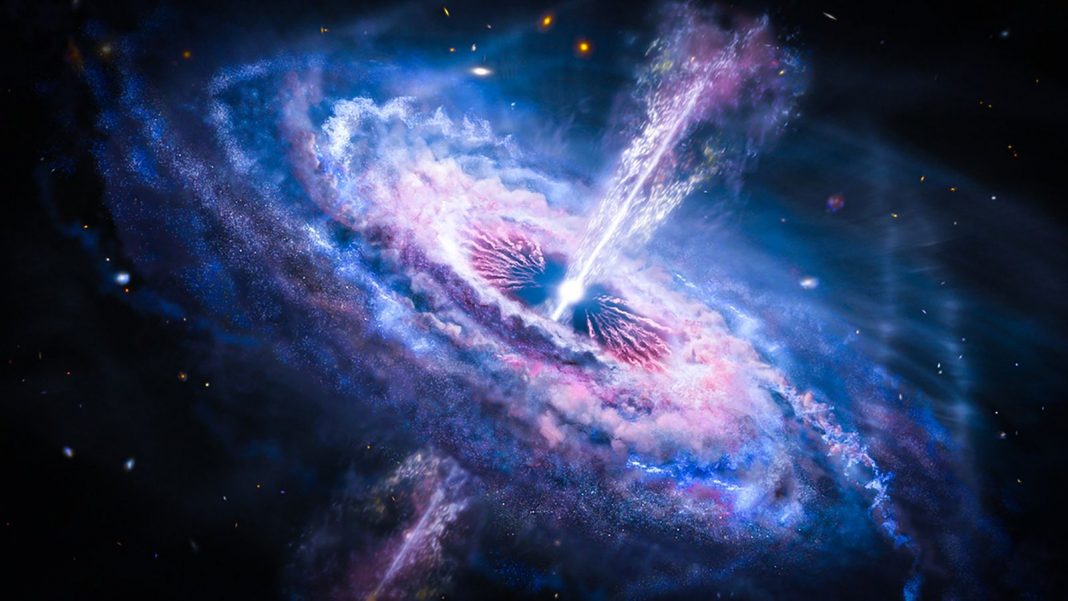
Scientists have observed the early universe running in extreme slow motion for the first time.
Researchers achieved the feat by using data from quasars, which are outer-space objects so enormous, bright, and far away from Earth that astronomers can use them as “beacons”.
As light from a quasar travels through the universe, it leaves a trail that can hold clues as to the origins of everything from stars to entire galaxies.
In this case, scientists in Australia and New Zealand studied 190 quasars over two decades in an attempt to effectively turn them into “clocks”, with each wavelength representing a tick (or tock).
The light from quasars has travelled for billions of years across space before it’s seen in a telescope, which is what allowed the team to use them to peer back through time.
The process was all based on Albert Einstein’s theory of relatively, which explains how time can move differently based on motion and speed, meaning events that occur at the same time for one person could occur at a different time for another.
The distant, or ancient, universe should therefore appear to run slower than the present.
‘Early time appears to drag’
Professor Geraint Lewis, of the University of Sydney, said: “Thanks to Einstein, we know that time and space are intertwined and, since the dawn of time in the singularity of the Big Bang, the universe has been expanding.
“This expansion of space means our observations of the early universe should appear to be much slower than time flows today. In this paper, we have established that back to about a billion years after the Big Bang.”
Prof Lewis said the universe appeared to flow five times slower after the big bang around 13.8 billion years ago.
He explained: “If you were there, in this infant universe, one second would seem like one second – but from our position, more than 12 billion years into the future, that early time appears to drag.”
Prof Lewis and colleague Dr Brendon Brewer, of the University of Auckland, published their findings in the journal Nature Astronomy.







